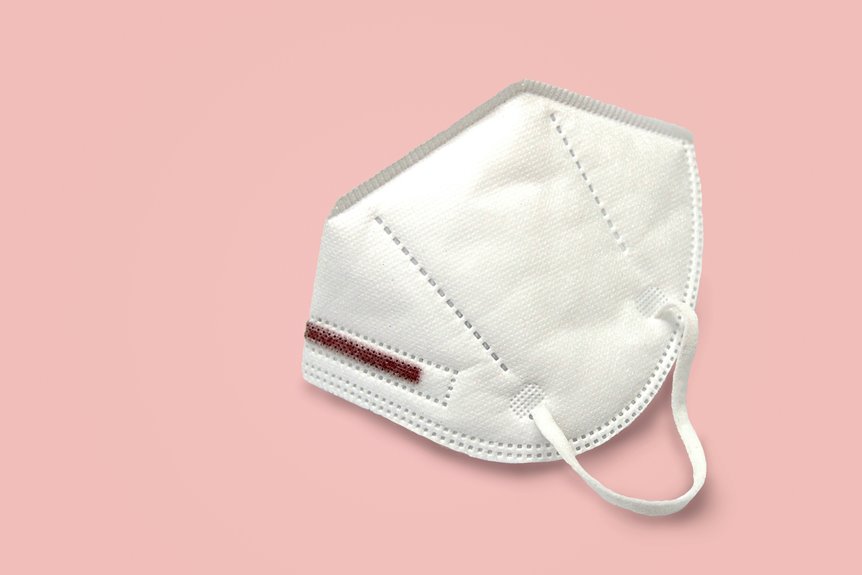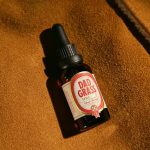Yes, you can be allergic to polypropylene fabric, especially if your skin reacts to additives, dyes, or chemicals used during its production. Symptoms like itching, redness, hives, or swelling may appear where the fabric touches your skin. These reactions often worsen with prolonged contact. Avoiding direct exposure and choosing alternative fabrics can help manage symptoms. Understanding what triggers your reaction and how to identify it can give you better control over your allergy risks.
Table of Contents
Key Takeaways
- Yes, some people can develop allergic reactions to polypropylene fabric, primarily due to chemicals, dyes, or additives used during manufacturing.
- Symptoms of polypropylene allergy include redness, itching, rash, hives, and sometimes swelling or blistering at contact sites.
- Allergic reactions are often caused by residual monomers, formaldehyde resins, or production contaminants rather than the polypropylene fiber itself.
- Diagnosis involves medical history, physical exam, patch testing, and sometimes blood tests to detect specific allergic responses.
- Managing allergy includes avoiding polypropylene contact, choosing alternative fabrics, washing new clothes, and using barrier creams or layering.
What Is Polypropylene Fabric?
Polypropylene fabric is a synthetic material made from polymer fibers known for being lightweight, durable, and moisture-resistant.
Polypropylene fabric offers a lightweight, durable, and moisture-resistant solution ideal for versatile everyday use.
When you wear or use products made from this fabric, you benefit from its strength and ability to repel water, which keeps you feeling dry. It’s commonly found in activewear, upholstery, and even reusable shopping bags because of these qualities.
You’ll notice it doesn’t absorb moisture like cotton does, so it dries quickly. Plus, polypropylene fabric resists stains and chemicals better than many other materials, making it a practical choice for everyday items.
If you’re searching for something that lasts and performs well in damp or rough conditions, polypropylene fabric is a reliable option to evaluate.
Common Symptoms of Polypropylene Allergy
Although allergic reactions to certain fabrics are uncommon, you might experience symptoms if your skin comes into contact with polypropylene fabric.
You could notice redness, itching, or a rash where the fabric touches your skin. Some people develop hives—raised, itchy bumps that can be uncomfortable. In more severe cases, you may experience swelling or blistering.
These symptoms often appear shortly after exposure and can vary depending on your sensitivity level. You might also feel a burning or stinging sensation. If you wear polypropylene clothing for long periods, irritation can worsen.
Keep in mind, these signs can resemble other skin conditions, so it’s important to observe when symptoms arise. If you suspect a polypropylene allergy, consider consulting a healthcare professional for proper diagnosis and advice.
Causes of Allergic Reactions to Polypropylene
When your skin reacts to certain materials, it’s often because of chemicals or additives used during manufacturing. Polypropylene fabric itself is generally inert, but additives like dyes, formaldehyde resins, or finishing agents can trigger allergic reactions. You might also react to residual monomers or contaminants from production. Understanding these causes helps you avoid exposure and reduce symptoms.
| Cause | Description | Common Symptoms |
|---|---|---|
| Dyes | Colorants used in fabric | Itching, redness |
| Formaldehyde resins | Used for wrinkle resistance | Rash, swelling |
| Residual Monomers | Unreacted components | Irritation, hives |
| Finishing Agents | Chemicals for texture or shine | Dryness, burning |
| Contaminants | Impurities from production | Inflammation, rash |
How to Diagnose a Polypropylene Allergy
Diagnosing a polypropylene allergy typically involves a combination of patient history, physical examination, and specific testing.
First, your doctor will ask about your symptoms and exposure to polypropylene products, noting any patterns of skin irritation or respiratory issues.
Your doctor will inquire about symptoms and exposure to polypropylene, focusing on skin irritation or breathing problems.
During the physical exam, they’ll check for signs like redness, swelling, or hives where the fabric contacted your skin.
To confirm the diagnosis, they might perform patch testing, where small amounts of suspected allergens, including polypropylene, are applied to your skin under adhesive patches.
After 48 hours, your doctor will assess any reactions.
In some cases, blood tests measuring specific IgE antibodies can help identify allergic responses.
Accurate diagnosis guarantees you understand whether polypropylene triggers your symptoms and guides appropriate medical advice.
Managing and Preventing Reactions to Polypropylene
If you’ve confirmed a polypropylene allergy, managing your symptoms starts with avoiding direct contact with the fabric whenever possible.
You’ll want to check labels carefully and opt for alternatives like cotton or silk. When exposure is unavoidable, protect your skin with barrier creams or wear a layer of clothing underneath polypropylene items.
To prevent reactions, consider these steps:
- Choose hypoallergenic fabrics for clothing and bedding.
- Wash new clothes before wearing to remove residual chemicals.
- Keep your living environment free from polypropylene-based products like certain carpets or upholstery.
Frequently Asked Questions
Is Polypropylene Fabric Environmentally Friendly?
You might think polypropylene fabric is eco-friendly since it’s lightweight and durable, but it’s made from non-renewable petroleum. It’s not biodegradable and can contribute to microplastic pollution, so it’s not the greenest choice out there.
Can Polypropylene Allergy Develop After Years of Use?
Yes, you can develop a polypropylene allergy after years of use. Your skin might become sensitized over time, causing reactions like itching or rash even if you didn’t have issues initially. Stay alert to changes.
Are There Hypoallergenic Alternatives to Polypropylene Fabric?
You won’t believe how many hypoallergenic fabric options are out there! Cotton, bamboo, and silk are fantastic alternatives to polypropylene—they’re gentle on your skin and reduce irritation, so you can stay comfy without worrying about allergies.
Does Washing Polypropylene Fabric Reduce Allergy Risk?
Washing polypropylene fabric can reduce allergens like dust and sweat, lowering your allergy risk. However, it won’t eliminate sensitivity to the material itself if you’re truly allergic. Regular cleaning definitely helps keep irritation minimal.
Can Pets Trigger Similar Allergic Reactions to Polypropylene?
Just like a hidden storm, pets can stir allergic reactions in you, releasing dander and saliva that irritate. Their presence often triggers symptoms similar to fabric allergies, so you’ll want to manage exposure carefully to stay comfortable.
- The Unique Texture of Herringbone Velvet Fabric - June 19, 2025
- How to Sew With Herringbone Twill Fabric: Tips for Beginners - June 19, 2025
- From Suits to Sofas: The Versatility of Charcoal Herringbone Fabric - June 19, 2025







